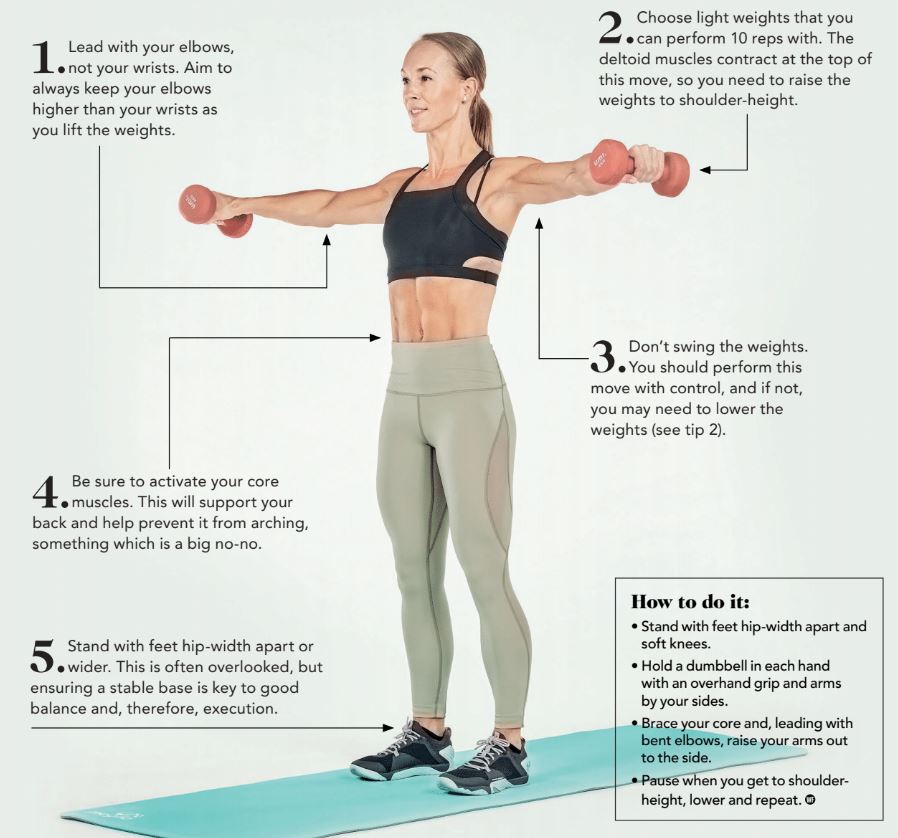The lateral raise will help you sculpt sleek shoulders, but it’s easy to execute with poor form. Here’s our step-by-step guide to help you learn how to do a lateral raise with perfect form…
Lat raises, dumbbell raises, shoulder raises… a move with many guises, the lateral raise often features as a staple in many workout schedules, largely thanks to its ability to build stability and strength with minimal kit. All you need is a set of dumbbells, but be warned, you’re going to require lighter weights than you think.
‘It’s important to drop your ego at the door with this exercise,’ says PT Josh Ivory (@josh_j_ivory). ‘If the weight you use is too heavy, you won’t contract the right muscles or get great gains because you won’t be performing the exercise with a full range of movement.’
Working the upper arms, core and deltoids, the lateral raise is a beginner-friendly move, but it’s important to know how to do it properly, with correct form and technique, if you want stronger shoulders. ‘The lateral raise is effective and does use a simple movement pattern, but I often see it being poorly executed,’ adds Ivory.
‘Fortunately, the smallest tweaks can go a long way, so get this movement right and you’ll see its benefits quite quickly.’ Here’s our step-by-step guide to help you learn how to do a lateral raise with perfect form…
How to do a lateral raise: step-by-step guide
- Stand with feet hip-width apart and soft knees.
- Hold a dumbbell in each hand with an overhand grip and arms by your sides.
- Brace your core and, leading with bent elbows, raise your arms out to the side.
- Pause when you get to shoulder-height, lower and repeat.
Top tips to perfect your lateral raise technique:
- Lead with your elbows, not your wrists. Aim to always keep your elbows higher than your wrists as
you lift the weights. - Choose light weights that you can perform 10 reps with. The deltoid muscles contract at the top of this move, so you need to raise the weights to shoulder-height.
- Don’t swing the weights. You should perform this move with control, and if not, you may need to lower the weights (see tip 2).
- Be sure to activate your core muscles. This will support your back and help prevent it from arching, something which is a big no-no.
- Stand with feet hip-width apart or wider. This is often overlooked, but ensuring a stable base is key to good balance and, therefore, execution.
Photography: Eddie Macdonald | Model: Nicki Petitt | Clothing: WIT x Sigmundsdóttir Swim Top, £40, and High Rise Mesh 7/8 Leggings, £85; Under Armour Trainers









